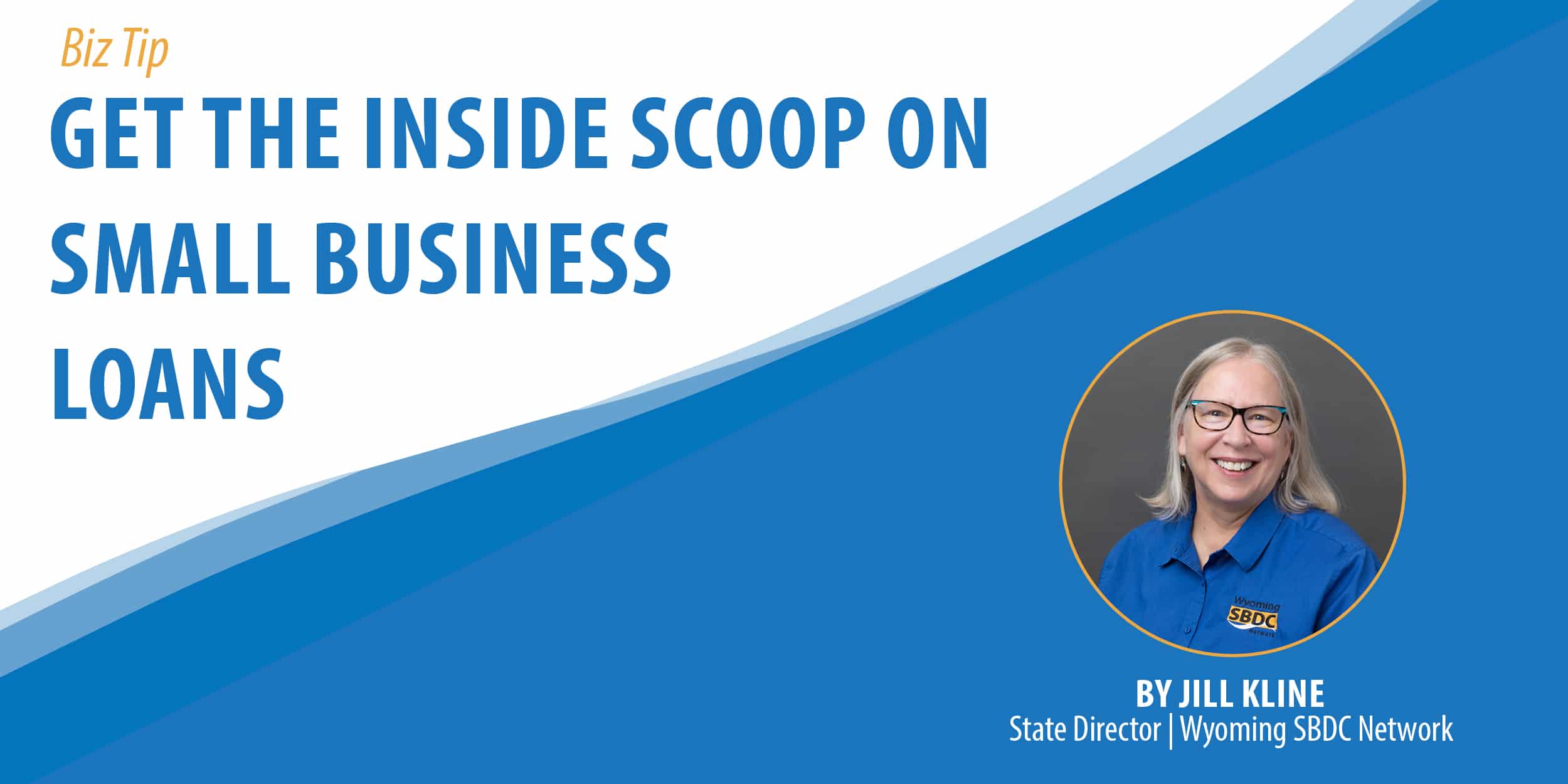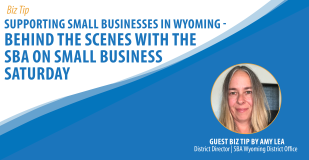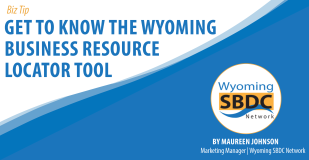One of the many services the Wyoming SBDC offers is helping entrepreneurs determine their financial needs for starting or expanding their business. This often results in the business seeking a loan. So, what leads up to that outcome and how do you move forward?
Borrowing money for your business is a significant decision and can be stressful. Identifying the purpose and amount of the loan is critical but that’s not all you need to know. Other considerations include the current financial status of your business, what your borrowing capacity is, how the repayment plan will affect your cash flow, is a long- or short-term loan adequate, or would a revolving business credit line work for your current needs, what are the terms of the loan, and more. If you’re just starting your business, you’ll want to determine the startup costs, your borrowing capacity or personal credit history, how much can or must you contribute, is collateral involved, how does repayment fit into your cash flow, and other considerations.
This broad overview of the process might look like the following:
Determine the loan purpose: It may be best suited for startup expenses, equipment or inventory, expansion, or an unexpected expense like an increase in supply costs.
Prepare necessary documentation: You will need cash flow statements or projections, a balance sheet and profit and loss statements, tax returns, a business plan, etc.
Compare loan options: What type of loan best supports your purpose or need?
Select a lender: Will your preferred lender be your current bank, credit union, an online lender? There may be some research necessary to determine the best options.
Complete the lender application: Applications typically require details about the business and owner and will be supported by financial documents you’ve prepared.
Meet with your lender: A lender may want to review your materials with you or request you provide an overview or pitch your request.
Wait: The lender conducts a thorough review of your application and documents. Lender’s criteria for making a business loan may vary.
Learn of approval or denial of your application: If approved, your lender will schedule a date for closing the loan. If denied, you may want to learn why, provide additional details, or seek other options.
Whether you’re an existing business or a startup, cash flow projections are a great initial step. Existing businesses can use historical financial information to develop a projection. A startup will need research into industry standards including average sales and expenditures. The SBDC has teamed with Wyoming’s SBA District Office to provide free training opportunities across the state to give you the “Inside Scoop” on how to get your first business loan approved. If you can’t attend these sessions, Wyoming SBDC advisors can assist you through this process through confidential, one-on-one meetings. Visit WyomingSBDC.org to register for this training opportunity or find an advisor near you.
About the Author: Jill has been with the Wyoming SBDC Network since 1998 and loves nothing more than seeing entrepreneurs succeed. When she’s not in the office or on the road, Jill enjoys loving on her dogs Buttercup and Dilly, spending time with her husband, and knitting something cozy.






